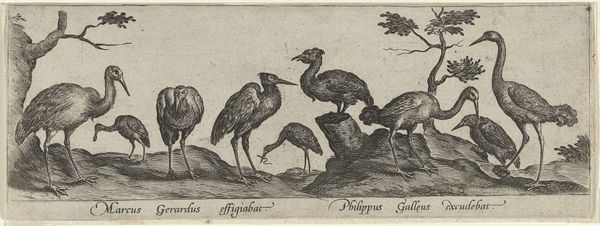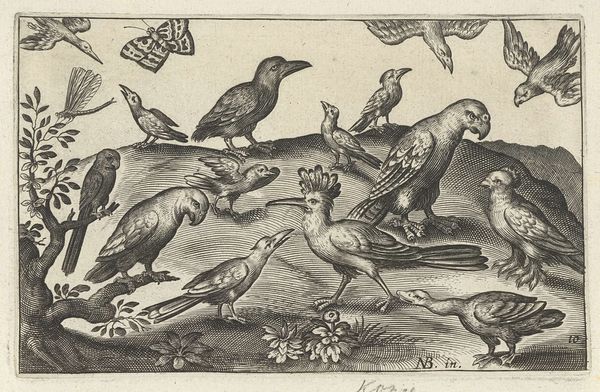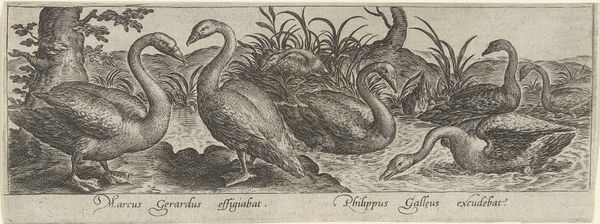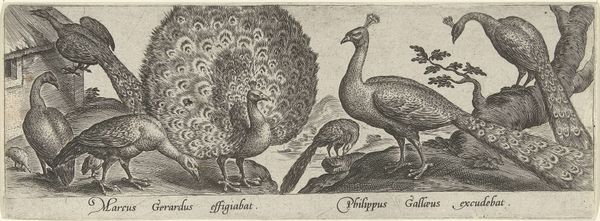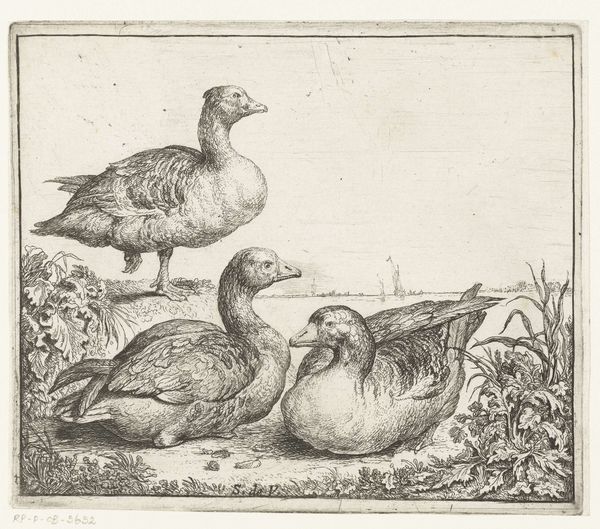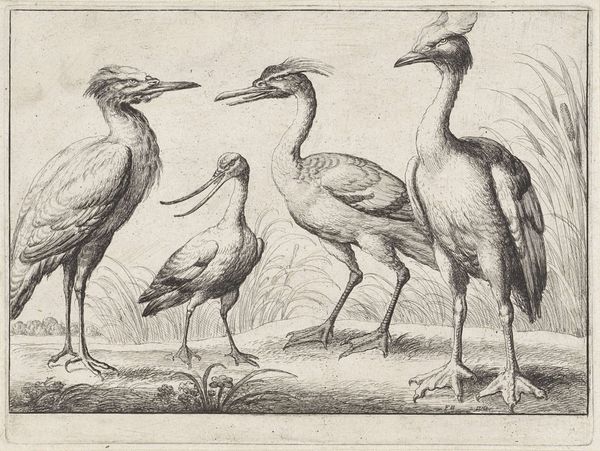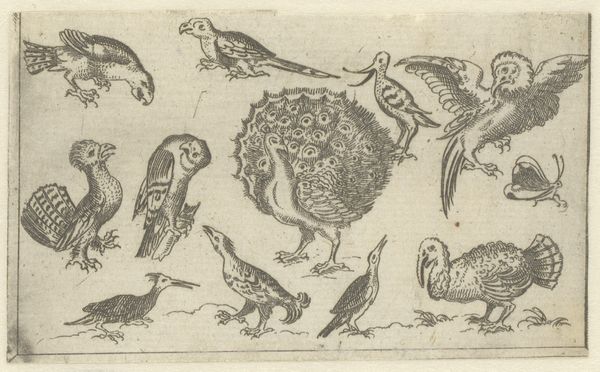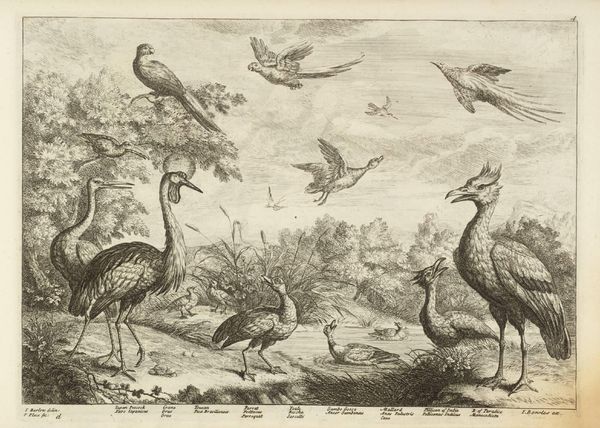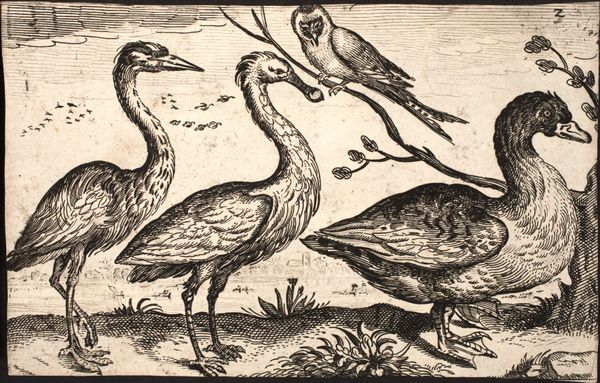
drawing, print, engraving
#
drawing
# print
#
old engraving style
#
bird
#
figuration
#
line
#
northern-renaissance
#
engraving
Dimensions: width 209 mm, height 78 mm
Copyright: Rijks Museum: Open Domain
Philips Galle made this 16th-century print of ‘Elf Vogels’, or eleven birds, using the technique of engraving. This was a highly skilled process. The artist would have used a tool called a burin to carve lines directly into a copper plate. Ink is then applied to the plate, and the surface wiped clean, leaving ink only in the incised lines. When paper is pressed against the plate, the image is transferred. Galle was a master printmaker who ran a large workshop. His business model depended on the efficient reproduction of images for a growing market. The precision of the engraving technique allowed for detailed replication, making art more accessible, although labor intensive and specialized. The uniformity of the line suggests a systematic, almost industrial approach to art production. While the print depicts nature, its creation was deeply embedded in the economic structures of the time. Examining the making of ‘Elf Vogels’ underscores how art and craft were intertwined with labor and commerce in the early modern period.
Comments
No comments
Be the first to comment and join the conversation on the ultimate creative platform.


